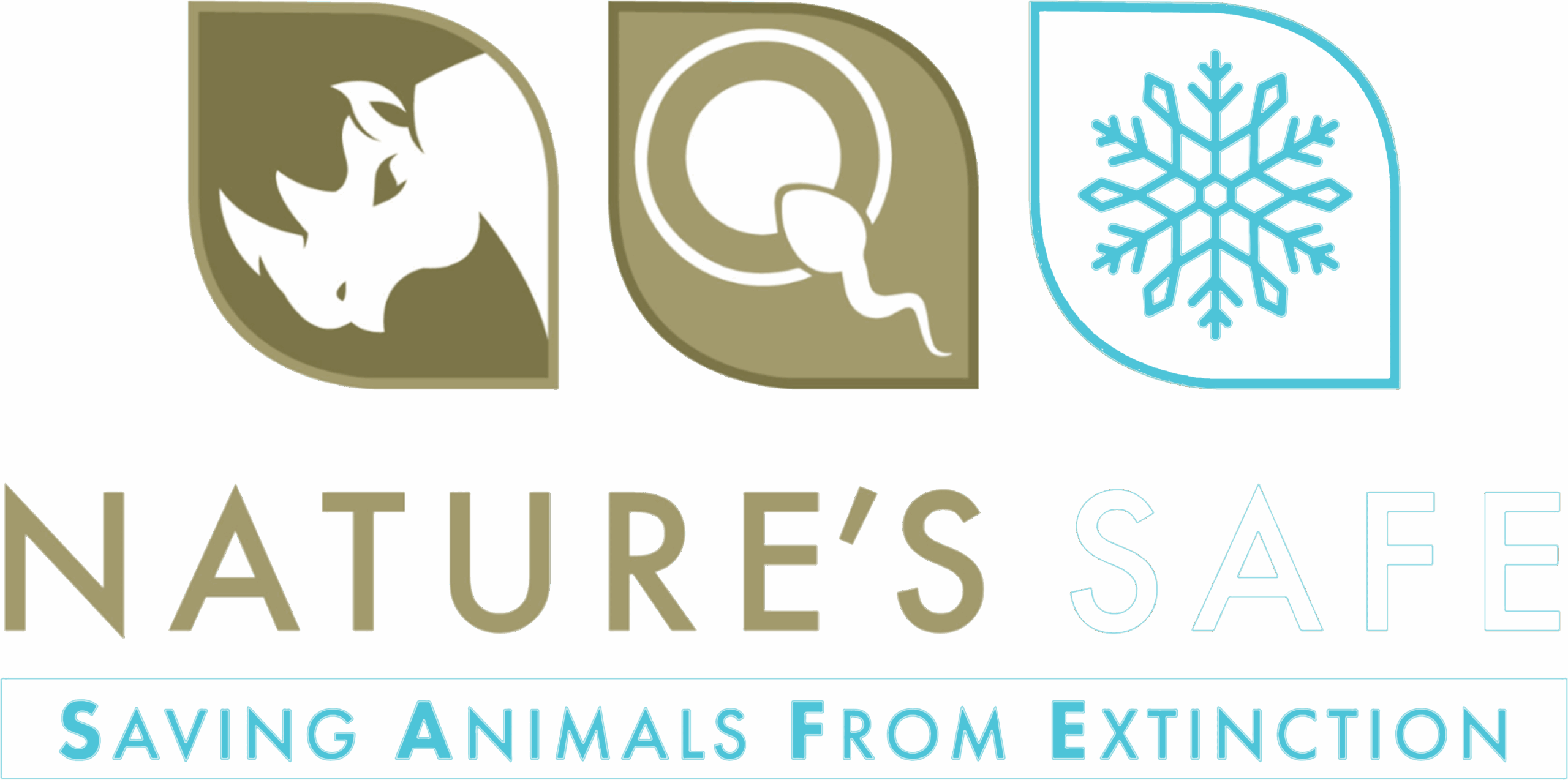Conservation
At Ponderosa our goal is to help ensure a wide range of species and habitats can survive for future generations enjoy and learn about.
Conservation at Ponderosa Zoo
Our mission is to inspire people of all ages and abilities through Zoo-led education and engaging experiences, helping to ensure the survival of species and biomes for future generations with the aim of contributing towards active conservation. We aim that all of our customers have a fantastic day out whilst learning about species in the wild and in captivity through educational signage and keeper talks which take place daily.
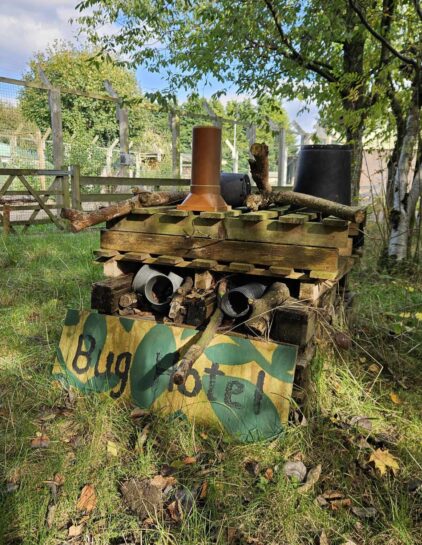
Insects
Our Conservation Efforts for the Native Insect Species Found at Ponderosa Zoo
We are currently undertaking a two-year project identifying what species of insects are found in certain areas at the Zoo. We have set up three transects in our conservation area, behind the Serval enclosure, and monitor which species are seen on a morning and evening. We have been collecting data for just over 12 months and we have observed a variety of species including midges, ants, spiders, snails, slugs, fruit flies and bees. Bug boxes and bug hotels have been built on-site and will be implemented into these areas so we can see if our new additions have an effect on the species observed and/or their abundance.
Visit the RSPB website to learn how to build your own bird box and help our native bird species: How to Build a Bird Box with our Free DIY Plans
Herptile
Native Herptile Populations at Ponderosa Zoo: Influences of Public and Animal Proximity
We have set up several secluded areas with layers of sheet metal in order to identify what species of reptiles and amphibians are currently found within the boundaries of Ponderosa Zoo. We are aiming to identify the influences of public proximity on the abundance of species found. To date, we have not observed any reptile or amphibian species under these metal sheets. However, we have noted species such as slugs, garden snails, black clock beetles, woodlice, centipedes and a field vole.
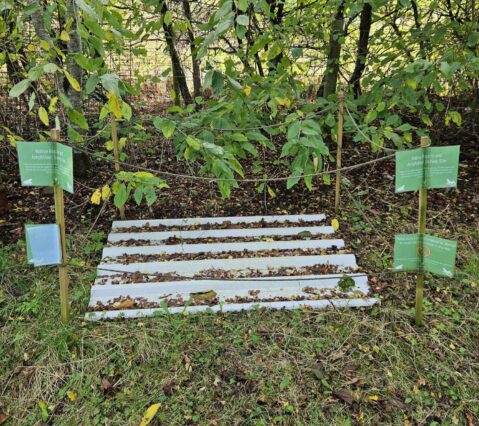
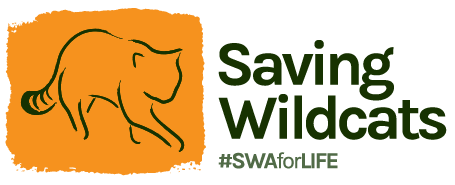
Saving Wildcats
Saving Wildcats is an EU-Life funded partnership project, led by the Royal Zoological Society of Scotland, focused on restoring wildcats to Scotland through conservation breeding and release. Wildcats, also known as the Highland Tiger, are the UK's last remaining native cat and are on the brink of extinction following centuries of habitat loss, persecution and, more recently, interbreeding with domestic cats. Ponderosa Zoo is one of over 30 zoos and wildlife parks committed to helping save this incredible species.
Constructed in a quiet, off show area of Highland Wildlife Park, the Conservation Breeding for Release Centre (CBRC) was established. Here, wildcats are carefully bred and prepared for a challenging life in the wild by experienced animal keepers and a dedicated veterinary team. Wildcats are carefully monitored and observed by specialist teams to identify which individuals have the best chance of survival if released. So far, Saving Wildcats has celebrated two successful breeding seasons, with 22 kittens born in 2022 and 13 kittens born in 2023. The 2024 breeding season is also going well, and an update will be provided on the total number of kittens born later in the year.
In June 2023, 19 wildcats were successfully released into the Cairngorms National Park. This area was carefully chosen by Saving Wildcats as an appropriate environment for wildcats to thrive, alongside the vital support from local communities and landowners. Saving Wildcats works closely with land managers to address the risks facing this iconic species.
With the help of volunteers, the field team have been monitoring the released animals closely using GPS-radio collars and over 100 trail cameras. The data collected has revealed many new insights into the behaviour and ecology of wildcats, particularly their activity patterns and habitat use. Daily tracked has also allowed the team to monitor the released wildcats' welfare.
In May this year, Saving Wildcats reached an incredible project milestone - the team were able to confirm the first wild-born wildcat kittens after the litter was recorded on the trail cameras. Tracking data suggests the kittens could be the result of successful mating between two of the released wildcats, due to their movements overlapping during the breeding season. To date, seven litters have now been born to released females. While it is hoped that all of the litters have been fathered by released male wildcats, there is always a risk of interbreeding (hybridisation) between wildcats and domestic cats. It will take time before Saving Wildcats can safely acquire DNA profiles from the kittens to confirm their genetics.
The project continues to mitigate the threat of interbreeding and disease transmission from domestic cats in the project area by monitoring the wild-living cat population and encouraging responsible cat ownership with local communities. Saving Wildcats also runs a Trap-Neuter-Vaccinate-Return programme for feral domestic cats to prevent interbreeding with wildcats and unwanted domestic kittens.
In addition to the wildcats in the CBRC, the project is supported by the UK conservation breeding programme. The breeding programme is a collaboration of zoos, wildlife parks and private collections, including Ponderosa Zoo, that are working together to help ensure the species' survival. Together, we are all committed to growing the population of wildcats through conservation breeding and release, whilst continuing to remove the threats facing this iconic species in Scotland. To find out more about Saving Wildcats and how you can get more involved, please visit the following website: savingwildcats.org.uk
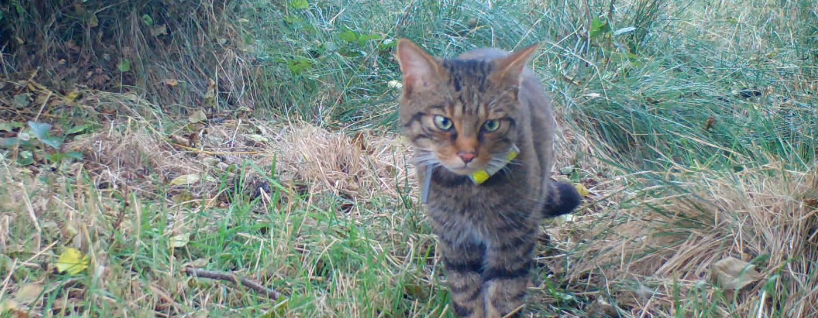


Founded in 1991, Ponderosa Zoo, is home to over 100 animals and remains committed to accessibility, education, conservation, and inspiring visitors of all ages through engaging zoo-led experiences.
Get In Touch
Zoo
Phone: 01924 235276
Email: office@ponderosa-centre.co.uk
Lakeside Restaurant
Phone: 01924 404604
Email: lakeside@ponderosa-lakeside.co.uk
Day Care
Phone: 01924 404154
Quick Links
©Copyright Ponderosa Zoo
Website by Edmondson's IT Services



